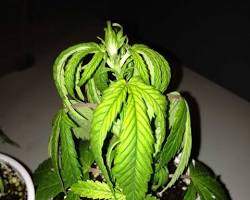Indoor plants bring a touch of life and beauty to our homes, but keeping them thriving requires proper care, especially when it comes to watering. Unfortunately, both overwatering and underwatering are common mistakes that can lead to unhappy plants. This guide will help you navigate the world of plant hydration and ensure your indoor jungle flourishes.
What is overwatering?
Overwatering occurs when you provide your plant with more water than it needs. This can happen due to various factors, such as inadequate drainage, using the wrong size pot, or overestimating the plant’s water needs.
Signs and symptoms of overwatering for indoor plants:
● Wilting leaves (may seem counterintuitive, as the roots are unable to absorb oxygen)
● Yellowing leaves, especially lower leaves
● Soft, mushy stems and leaves
● Brown leaf edges
● Mould or fungus on the soil
● Foul odour from the soil
Consequences of overwatering for indoor plants:
● Root rot: Excess water can cause the roots to rot, leading to stunted growth, decreased nutrient uptake, and potentially plant death.
● Nutrient deficiencies: Overwatering can wash away essential nutrients from the soil, leading to deficiencies that impact plant health.
● Stunted growth: Lack of oxygen due to waterlogged soil hinders root development and overall plant growth.
● Reduced flowering and fruiting: Overwatered plants may not produce flowers or fruits as they focus their energy on survival.
How to prevent overwatering for indoor plants:
● Choose pots with drainage holes and use a well-draining potting mix. This allows excess water to drain away freely, preventing root rot.
● Water deeply but less frequently, allowing the soil to dry out completely between waterings. Stick your finger into the soil to check if the top inch is dry before watering again.
● Learn the specific water needs of your plants. Different plants have different watering requirements. Research your plants to understand their individual preferences.
● Use a moisture metre or finger test to check soil moisture. These tools can help you determine if your plant needs water.
● Empty the drainage tray after watering. This prevents water from accumulating and re-entering the pot.
● Avoid over fertilising, as this can increase the plant’s water needs.
Part 2: Underwatering

under watered plant with drooping leaves
What is underwatering?
Underwatering occurs when you don’t provide your plant with enough water. This can happen due to forgetting to water, using a fast-draining potting mix, or not watering deeply enough.
Signs and symptoms of under watering for indoor plants:
● Wilting leaves
● Dry, crispy leaves
● Brown leaf tips
● Drooping stems
● Slow or stunted growth
Consequences of under watering for indoor plants:
● Leaf drop: The plant may drop leaves in an attempt to conserve moisture.
● Stressed and weakened plant: Underwatering can make your plant more susceptible to pests and diseases.
● Death of the plant: Severe underwatering can lead to plant death
How to prevent underwatering for indoor plants:
● Establish a regular watering schedule, but be flexible and adjust based on the plant’s needs and environmental factors.
● Use a moisture meter or finger test to check soil moisture.
● Water deeply when the soil feels dry to the touch.
● Group plants with similar water needs together. This makes it easier to water them simultaneously.
● Use a humidifier to increase the humidity around your plants (if needed). Many indoor plants thrive in higher humidity environments.
● Consider using self-watering planters. These planters have a reservoir that automatically supplies water to the plant, reducing the risk of underwatering.
Part 3: Finding the “Water Sweet Spot” for Different Plants

variety of indoor plants with different water needs
Different plants have different water needs. Some, like ferns and spider plants, require more frequent watering, while others, like succulents and cacti, prefer to dry out significantly between waterings.
Here’s a brief guide to categories indoor plants based on their water needs:
● Low-water-need plants: Succulents, cacti, air plants, snake plants
● Medium-water-need plants: Pothos, philodendrons, peace lilies, spider plants
● High-water-need plants: Ferns, African violets, orchids
It’s crucial to research the specific water needs of your individual plants to ensure they thrive.
Conclusion:
Watering is a crucial aspect of indoor plant care. By understanding the signs and symptoms of overwatering and underwatering, you can adjust your watering practices accordingly and create a thriving indoor jungle. Explore our range of premium indoor plant care products at Nathan Coir to ensure your plants receive the best care they deserve.




